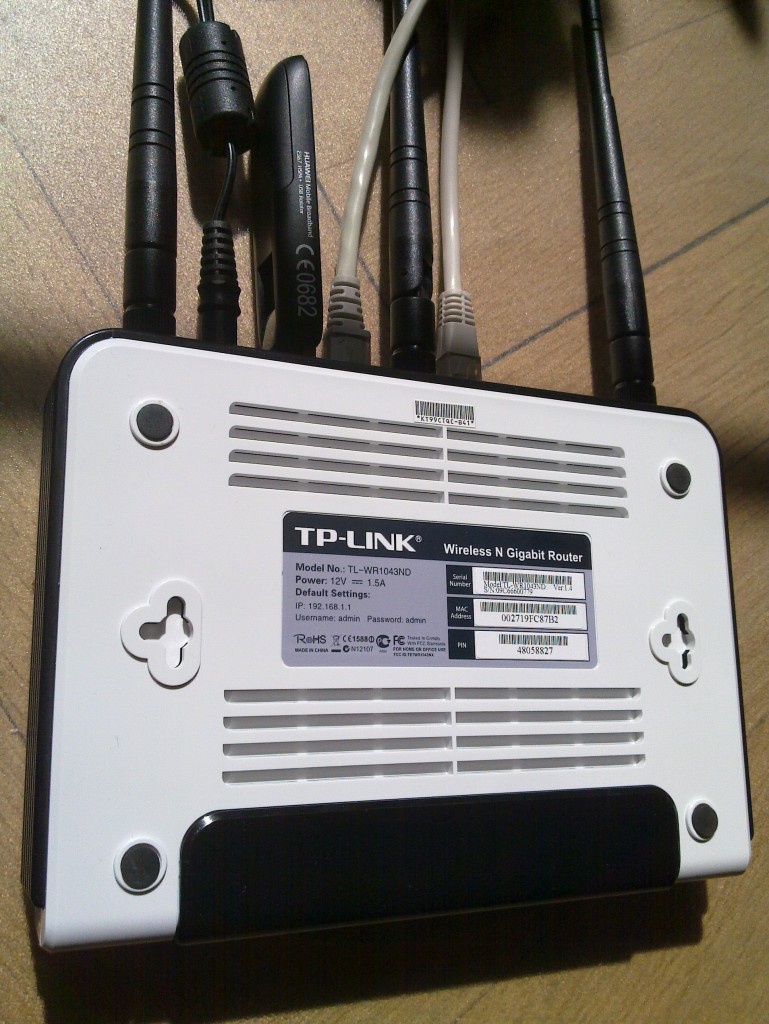My home network has several devices that do not have large persistent storage to keep log files. For example, my wireless routers based on OpenWRT doesn’t log to the limited local storage it has, and a Flukso energy metering device log power readings to a ramdisk. These devices log a fair amount of information that I ideally would like to keep for later analysis. I have never before seen a need to setup a syslogd server, thinking that storing logs locally and keeping regular backups of the machine is good enough. However, it appears like this situation calls for a syslogd server. I found an old NSLU2 in my drawer and installed Debian Squeeze on it following Martin Michlmayr’s instructions. I’m using a 4GB USB memory stick for storage, which should hold plenty of log data. I keep backups of the machine in case the USB memory stick wears out.
After customizing the installation to my preferences (disable ssh passwords, disable portmap/rpc.statd/exim4, installing etckeeper, emacs23-nox, etc) I am ready to configure Rsyslog. I found what looked like the perfect configuration example, “Storing messages from a remote system into a specific file”, but it requires me to hard code a bit too much information in the configuration file for my taste. Instead, I found the DynFile concept. With a file /etc/rsyslogd.d/logger.conf as below I can point any new device to my log server and it will automatically create a new file for it. And since the dates are embedded into the filename, I get log rotation suitable for rsync-style backups for free.
$ModLoad imudp
$UDPServerRun 514$ModLoad imtcp
$InputTCPServerRun 514$template DynFile,”/var/log/network-%HOSTNAME%-%$year%-%$month%-%$day%.log”
:fromhost-ip, !isequal, “127.0.0.1” ?DynFile
:fromhost-ip, !isequal, “127.0.0.1” ~
After this, I get log files written to /var/log/network-IP-YEAR-MONTH-DAY.log. For example:
pepparkaka:~# tail /var/log/network-192.168.1.47-2012-03-20.log Mar 20 13:40:21 192.168.1.47 avahi-daemon[1508]: Registering new address record for 192.168.1.47 on br-lan.IPv4. Mar 20 13:40:21 192.168.1.47 avahi-daemon[1508]: Registering HINFO record with values 'MIPS'/'LINUX'. Mar 20 13:40:21 192.168.1.47 sysinit: setting up led WAN LED (green) Mar 20 13:40:21 192.168.1.47 kernel: ar71xx-wdt: enabling watchdog timer
Use uci to configure the OpenWRT boxes to send log messages to this server:
uci set system.@system[0].log_ip=192.168.1.51
uci commit
Update! By default rsylog performs reverse lookups of incoming requests. This easily causes problems in case your DNS server is unreachable. Rsyslogd appears to have a long timeout for DNS queries, so if you expect incoming log messages to end up in the log when they are sent, think again. In my testing, it can take minutes until they end up in the log. For me, reverse DNS lookups does not add anything of value. To disable DNS lookups, make sure rsyslogd is invoked with the ‘-x’ parameter. On Debian, this is done by adding ‘-x’ to /etc/defaults/rsyslog like this:
RSYSLOGD_OPTIONS=”-c4 -x”

